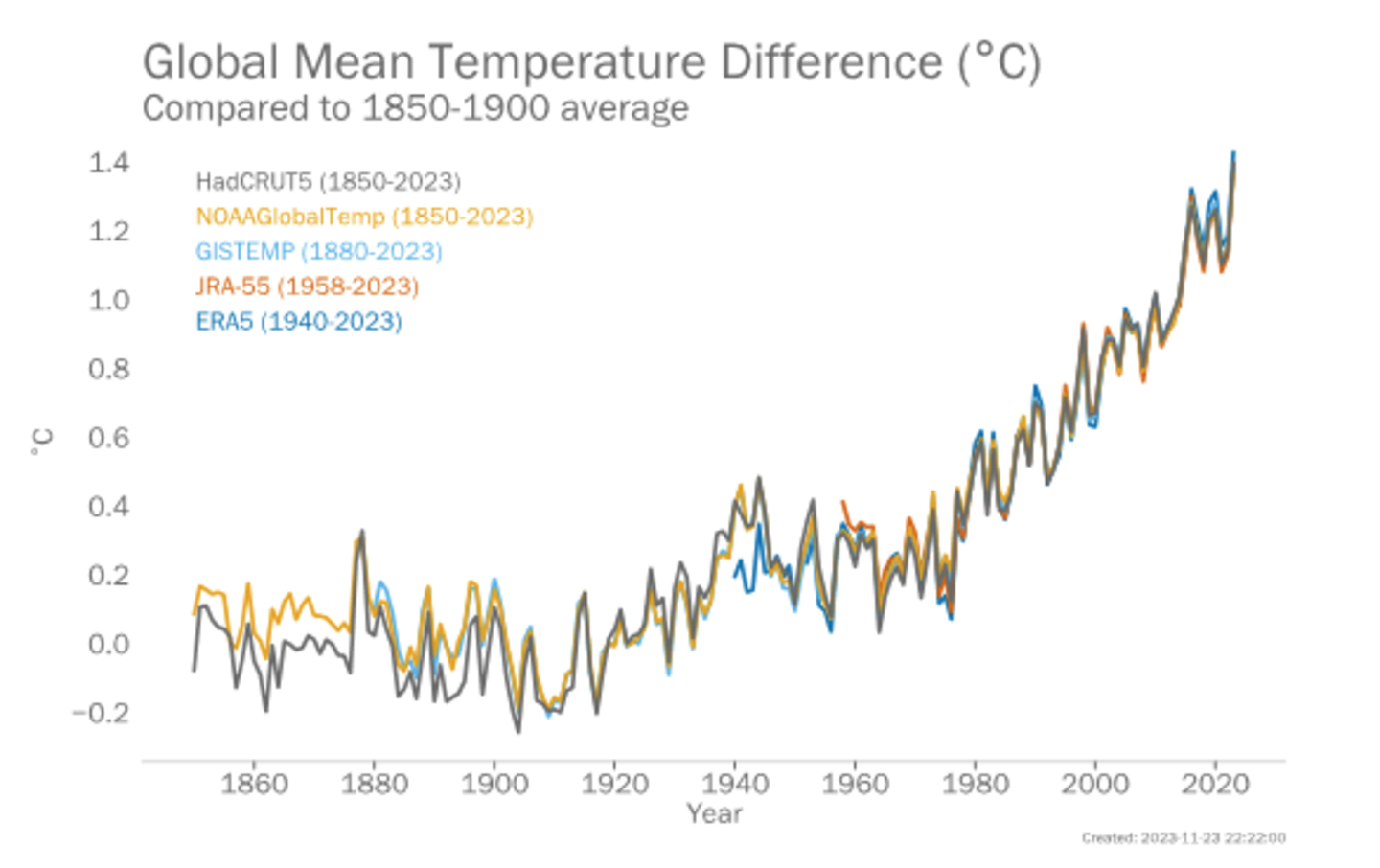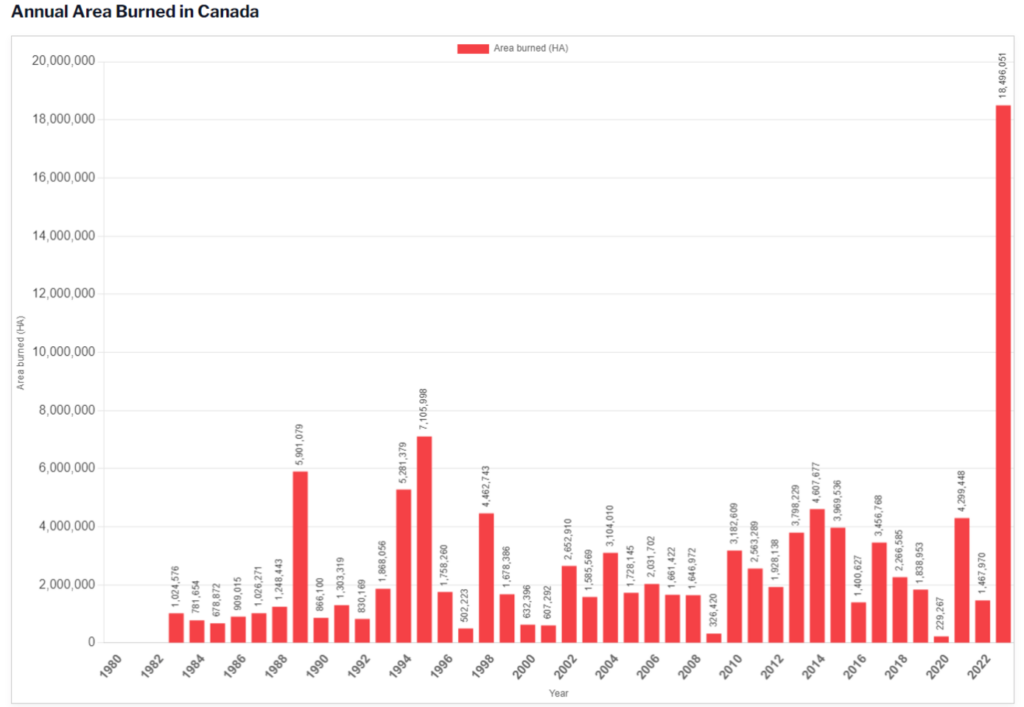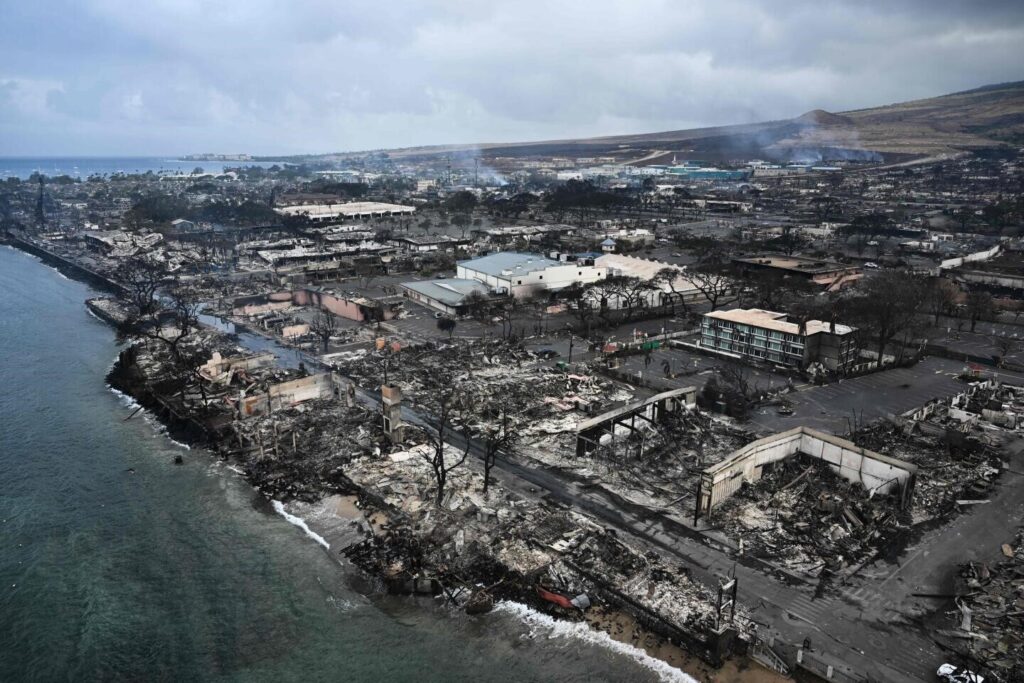As global temperatures surge, the summer wildfire season has witnessed a staggering increase in both the frequency and intensity of wildfires, covering regions that are not typically prone to fire. Closely following the latest updates, FIRE-RES advocates for an integrated fire management strategy to address the issue.
Summer 2023 stood out as the hottest on record on the global surface, in the record-setting trend of the past nine years and with the global mean temperature difference accelerating since the 1980s. Our planet underwent its warmest June-July-August period and experienced its highest recorded temperatures for September too. The heat manifested itself after an outstanding dry time, marked by low rainfall precipitations and insufficient snowfalls in Europe. Droughts already had considerable impacts on nearly all European regions, especially in 2018, 2022 and 2023.

What impacts has it had on forests? With their vulnerability already heightened over the last two decades, the higher temperatures dried out the landscape, making the vegetation highly flammable and increasing the likelihood of fires and their rapid spread. This paved the way for yet another challenging wildfire summer season in and outside Europe, resulting in a greater diversity of impacted landscapes, with visible effects on traditionally low fire-prone contexts.
Not unexpectedly, extreme wildfire events were witnessed too. According to the latest Joint Research Centre report on Forest Fires in Europe, Middle East and North Africa, the burned area in 2023 was smaller than in 2022, yet many wildfires proved uncontrollable by conventional firefighting methods, challenging the suppression capacities of firefighting bodies. Such was the case with the Evros wildfire in Greece, the largest wildfire ever recorded in the European Union, which resulted in more than 93.500 hectares burned and 20 people killed. In the rest of the world, the Maui wildfire in Hawaii killed more than 100 people and incinerated a large portion of the island. Meanwhile, Canada experienced its most severe wildfire season on record, with more than 18.5 million hectares of land burned as of 19 October 2023.
2023 wildfires in the spotlight
Greece, where a FIRE-RES Living Lab is located, was affected by a particularly tough wildfire season, entering the summer of 2023 with an overstock of vegetation and grass fuel. In this context, the successive heatwaves of July and August became catalysts for the largest wildfire events Europe has experienced during the last two decades. The first severe conflagrations happened in July both close to Athens, on the Island of Rhodes and in Thessaly. This first wave resulted in the evacuation of 30.000 tourists, two fatalities, and the destruction of military equipment from wildfire-caused explosions.
The situation escalated on 19 August, when the Evros wildfire, stemming from two distinct sources – one ignited by lightning and another by human activities – converged within a day of intense fire spread. It led to the destruction of 93.500 hectares of forest and rural areas and was classified as an extreme wildfire event due to its fast propagation, development of a pyrocumulonimbus cloud and unpredictable behaviour. The smoke affected regions more than 500 kilometres away from the burning area for more than a week, and the reported death toll rose to 20 people. The strong winds coupled with the extreme heat aggravated the impacts. The FIRE-RES project innovations have the potential to help accelerate the pace and effectiveness of the fuel treatments for the next years, fostering more informed decision-making on the scale, arrangement, allocation, and size of the implemented wildfire hazard reduction projects.
Wildfires in Chile flared in early February, across several central and southern regions with 430.000 ha burned. Almost half the area was in the regions of Araucanía and BioBío, the latter hosting a FIRE-RES Living Lab. Twenty-six people died, over 3.500 people were injured and 7.700 people were left homeless. The wildfires followed a megadrought and were fostered by extreme temperatures and strong winds. Almost 100% of the wildfires were human-induced, 32% of which are estimated to be intentional, 65% accidental and 4% unknown.
The Canary Islands have been regularly affected by forest fires in the last decades, especially during periods of dry and hot weather. Summer 2023 was no exception, with a first major wildfire breaking out on 15 July in La Palma, burning 4.650 hectares, destroying 20 buildings and forcing 4.000 people to evacuate. Only a month later, firefighters confronted the most severe fire in Tenerife in decades, which required 10 days to be contained and an entire month to be controlled. In this case, more than 14.000 hectares were burned, and more than 12.000 people were evacuated. Hot weather and strong winds reportedly accompanied the intense burning. The ravaged ravines in the August fires later reignited in a new blaze on 5 October. It coincided with a heat alert, highlighting the pattern of temperatures typical of summer extending into the autumn months. FIRE-RES implementation activities are about to start in the Living Lab focused on Gran Canaria Island.

In Canada, over 18.5 million hectares were impacted by wildfires, fuelled by warmer temperatures and droughts. The persistent fire-conducive weather conditions manifested during spring, with the warmest May-July period in over 80 years and particularly low relative humidity. The conflagrations doubled the carbon emissions of the previous annual record. In contrast to prior years, 2023 fires spanned across various regions, stretching from the West Coast to the Atlantic provinces and the North. By mid-July, there were 29 mega-fires, each exceeding 100.000 hectares. Seventeen direct fatalities were reported, among which at least 4 wildland firefighters since July. Plus, more than 200.000 citizens were evacuated. Vulnerable communities such as indigenous, fly-in, and other remote groups were disproportionately impacted by the lack of services and obstacles to response interventions. Unlike the usual fire season pattern, where the blazes alleviate around August, this year an intense episode of rapid fire growth advanced in the following months up into October.

In the state of Hawaii, as a consequence of dry and windy conditions – the latter exacerbated by the effects of Hurricane Dora – several wildfires hit Maui and Hawaii islands as of 8 August 2023. The state is notoriously exposed to drying trends, as it experienced the largest rainfall decline since the last century. Not only did the exceptional weather circumstances foster the outbreaks but they significantly contributed to hindering the emergency management by affecting power disruptions, road viability, helicopter action, and communications. The 114 fatalities affirmed the events among the deadliest US wildfires of the last century. The damages to the local economy, largely based on tourism, are hard to quantify in the magnitude of what has been defined as the largest natural disaster in Hawaii’s state history. The typical area burned by wildfires in Hawaii has increased in recent decades, almost quadrupling. This surge is attributed to the proliferation of non-native vegetation and the hotter, drier climatic conditions resulting from climate change. The decrease in agricultural activities in Hawaii has left previously cultivated lands unattended, making them susceptible to invasion by non-native species such as guinea grass, further contributing to the issue.
